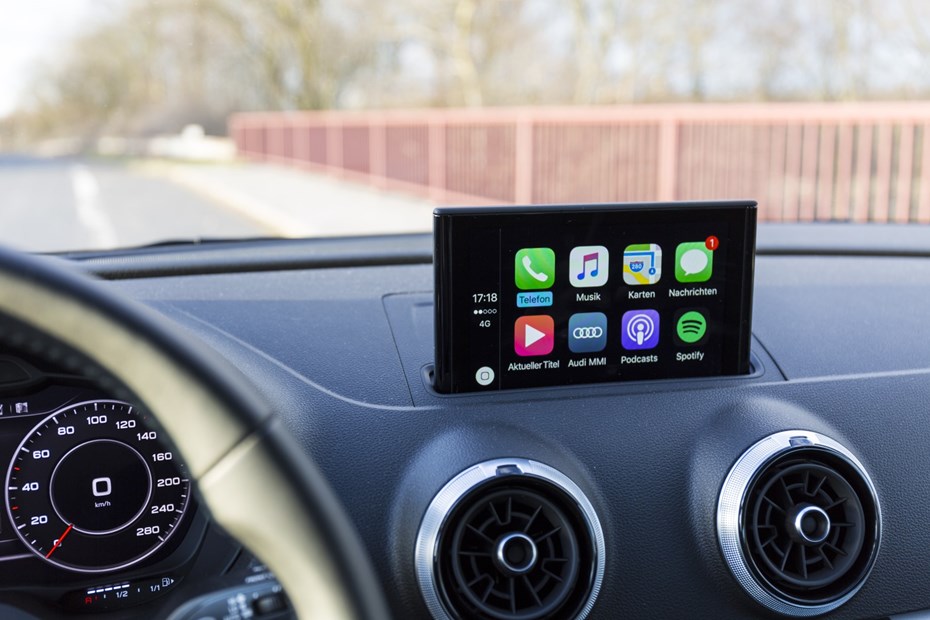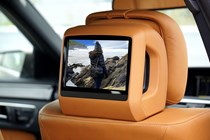The word infotainment refers to a car’s in-cabin technology suite. The term itself is a portmanteau of information and entertainment, both of which are provided in tandem to make a journey easier, more relaxing, or more engaging.
The quality and capability of a car’s infotainment services can have a significant influence on its overall driving experience, and so manufacturers are continuously improving their systems to gain an edge over their competitors.
On this page, we’ll explore what infotainment is, what forms it can come in and whether or not you need it in your life as a motorist.
What is an infotainment suite?
An infotainment suite is a swathe of in-car tech apparatus to keep the driver up to date and entertained.
Since the controls on most new cars have been digitised, modern functions are often now accessible via the centre console display. Once reserved for high-end vehicles, most new cars now feature an interactive display, with some, like the Mercedes E Class, boasting two displays if you include the digital instrument cluster.
For easy access to the most regularly used functions, some centre units include shortcut buttons to help owners get to what they need in better time. It’s important to note, however, that not all centre consoles feature these buttons, and some infotainment systems can still have users wearily scrolling through menus roadside in search of what they want.

To improve the infotainment experience, mobile phone synchronisation has become an integral part of in-cabin services. By supporting the relevant software – Apple CarPlay and Android Auto being the two most popular examples – navigation data, weather updates and music infotainment services can be easily accessed from one display.
How does menu nesting affect the car infotainment experience?
How car makers configure the various menus and sub-menus can have a strong influence on how easy the infotainment is to use. Navigation is another term pinched by software designers to explain how users get around the different features of a software package. In a car, offering road-based navigation too, this terminology can cause a bit of confusion.
Navigating an infotainment system should be intuitive. To achieve this, manufacturers have experimented with different approaches in menu-nesting. Some brands, like BMW, list all the features then drill down into submenus very comprehensively. In this approach, making changes to audio output or setting (road) navigation preferences can be done in ‘Vehicle Settings’.
Some brands, like Jaguar and Land Rover, have opted to try and group features together, i.e. climate control, audio, vehicle comfort, driving mode. For example, the audio options are controlled from one area, and any adjustments to the audio is done from a sub menu in this same area.
Do I need an infotainment suite?
Infotainment tech can certainly improve a journey. Contemporary in-cabin mod cons are designed to make driving as comfortable and stress-free as possible. That being said, they’re by no means imperative.

Even the most austere car cabins will still have enough to get you to your destination, you’ll just have to provide yourself with your own entertainment – counting cows?
If you’re in need of some auxiliary navigation support, consider investing in a sat nav or a cradle for your phone. Though as for the latter, just make sure it’s out of reach to keep on the right side of the law.
Which car infotainment system is the best in the UK?
Car infotainment systems are one area of car design that manufacturers heavily differentiate on. There’s very little standardised by regulation. However, some features in some cars can feel better laid-out than the same features in other cars.
Some of the more intuitive infotainment suites on the market are:
- BMW iDrive: BMW’s connected offering has long been ahead of more mass-market models. While its menu-nesting doesn’t suit everyone, the rotary dial has always been a great way to navigate.
- Mercedes Benz MBUX: the MBUX, stands for Mercedes Benz User Experience, is equally premium to BMW and has, too, pioneered various features over the last few decades. The MBUX voice recognition is particularly accurate.
Infotainment systems which use minimal steps to initiate or adjust any given function are often considered best, since they minimise driver distraction.
However, to define the best is difficult as they’re subjective. Some drivers love a digital button while others like physical switchgear – give a few a go first so you know what you want before buying.
Looking for more jargon-busting motoring meanings? Head over to our Parkers Car Glossary page and take a look at our other definitions
Just so you know, we may receive a commission or other compensation from the links on this website - read why you should trust us.








